An artist’s residency is a chance to get away from all the crazy distractions of modern life (iGadgets, family, openings, the news) and focus solely on your work. Some find their art growing from the experience, others value the contact with other creative souls, but almost everyone benefits from a change of place and break in routines.
I keep hearing of artists’ retreats, here and abroad, that readers may not know about, and so here is the first handful of a multi-part series, with some insider notes from members who have been recently in residence. The links will take to you straight to the requirements and amenities. So what are you waiting for?
Art & History Museums Maitland, not far from the busy theme parks of Orlando, FL, has a secluded campus that houses five museums and offers residencies throughout the year for three, six, and nine weeks. Founder André Smith (1880-1959), born in Hong Kong, worked as an architect and later became a “war artist” for the U.S. during World War I. In 1930 he migrated south from Connecticut and eventually acquired property on Lake Maitland, founding an art colony and a center for classes and exhibitions. Smith designed a home and studio in the so-called Mayan Revival style, fashioning concrete bas-reliefs that are a curious amalgam of Mayan, Chinese, and Christian imagery. Artists who lived and worked at the research studio during Smith’s lifetime include Milton Avery and Ralston Crawford.
“The place has a great staff who provide excellent company, and there’s only one artist in residence at a time,” says Elisabeth Condon, a painter who spends most of her time in New York. “It’s a wonderful getaway, right by the lake and next to a yoga studio. There are no meals, but there are good grocery stores nearby. I rented a car, which I probably didn’t need, and also had a small stipend to offset expenses.
“You’ve got to be prepared to be by yourself,” she continues. “You’re going to walk into a situation that’s not set up exclusively for your convenience. The staff will help you, but they are not there to serve you. They ask you participate in public events, talking about your work to the board and the art-going public, and you may be asked to lecture or critique local artists. But I found that interesting and unexpected.
“Maitland itself is a beautiful upscale community with a touch of funk.”
The Playa artist residency is located in the Oregon outback, near Summer Lake in Lake County. Applicants may choose among periods of two, four, or eight weeks, with the eight-week sessions reserved for international applicants. There are no fees, other than nominal processing fees, and a refundable deposit of $100 is required if you’re accepted. According to the website: “Except for twice-weekly group dinners, all meals and provisions are the responsibility of the artist. Living, work, and studio spaces have standard utilities, abundant natural light, open vistas in an expansive landscape, and are free of telephone, television, and internet. The commons building has a commercial kitchen, a space for yoga or dancing, a ping-pong table, a loft work area with a projection screen, library, telephone with free long-distance (USA only) and an IMAC with internet service and printer.”
“it’s in the middle of nowhere and super-remote,” says Frances Ashforth, an artist from Ridegefield, CT. “You fly in to Redmond and get provisions and then drive 2.5 hours east to this place (or the staff will send a shuttle). You have to be prepared for a certain level of desolation. Because the grounds are on the far western edge of the Great Basin, an area that has always interested me, there were a few things I wanted to do: Study the land—the lakebed was almost completely dry—and the salt outcroppings, and really work on prints on my own. There are two presses on the premises. I did about 25 drawings and 30 prints.
“The cabins are amazing—you have a living room, and a bedroom with a queen-sized bed. At one time this must have been a resort,” she adds. “It’s nice to have two dinners a week that you share with others at Playa, and a few of us would go for hikes. The whole plan is to combine artists and scientists, to there are anthropologists, archeologists, geologists, and even ornithologists who come to study the area.
“This is a very self-directed residency. You’re not going to meet scads of other people who will promote you or support your career. And there’s not a lot of socializing unless you want it to be that way.”
The Baer Art Center offers five two-week residencies on a working horse farm in a remote corner of northeastern Iceland, with access to the seacoast and a freshwater lake. Facilities consist of a large studio building with spaces suitable for one or two artists (during the residencies, the studios are reserved for one), a common lounge, and a barn for exhibitions; the kitchen and dining area and laundry room are all in the old main house.
“Most of the population in Iceland lives around Reykjavik, the capital, which is four-hour drive away,” says Peter Roux, who had a residency at Baer in June of 2013. Because this is summer in Iceland, the days are 24 hours long. “The sun would get dim around one a.m., but that wa it. I was averaging around three or four hours sleep a night, but I don’t remember ever feeling fatigued. And the quality of the light was much different, a much cooler light.
But it was the landscape that in large measure made the experience extraordinary for Roux. “There are really no trees around. You feel like you’re on another planet. On one side is water, on another it’s a deep fertile green, and still another side was all mountains and glaciers. Prior to my stay there, my principal subject had been trees, so as a painter it was interesting to me to be in a landscape without a familiar focus.
“All meals and a studio and living space are provided by the Baer Art Center, but there are twice-weekly excursions and open invitations to explore the area,” he adds. “Every day in the morning the kitchen-lounge area was stocked with breakfast staples. Around one o’clock we had a group lunch in the main house, where a chef created phenomenal meals based on locally sourced food, and for dinner the staff would leave food out for just us five. We could go in the kitchen and cook and clean up.”
The Baer offers time, space, and support, but artists must pay their own transportation and get their supplies and any finished art or works-in-progress to Iceland and back. “The only requirement is that you donate a piece or something you’ve done to the Baer collection,” says Roux. “I had pre-sold work to my collectors, who financed my trip there and back, along with my supplies. When I returned, I had a solo show about three months later, but I still go back and work with some of the images I’d made and some of the photos I had taken. The time there is still not really over.”
At the VCCA (Virginia Center for the Creative Arts) community in central Virginia, artists and photographers can avail themselves of individual studios, 500 to 700 square feet in size, with skylights, large windows, and sinks. One studio is equipped with a Dickerson combination press and one has a loading dock. A darkroom with two enlargers for printing 35 mm and four-by-five negatives is available for photographers.
About 25 fellows are typically in residence at any ‘one time, and these are selected by a peer review board on the basis of achievement and potential. The community is a mix of visual artists, fiction writers, filmmakers, composers, performance artists, photographers, and others. Says the website: the fellows’ residence “houses bedrooms, a dining room, kitchens, a library, laundry facilities, and recreation rooms. Each private bedroom has a sink and semi-private bath. Sliding glass doors open onto vistas of rolling pastures and the Blue Ridge Mountains. The living room has a large fireplace and a grand piano. In an adjoining room is the television with satellite reception. The library, contains a vast collection of books and journals and is also equipped with variety of audio equipment. The residence is a five-minute walk from the studio Barn.”
“It’s a very well-worn comfy place,” says Nancy Manter, who finished her third stay at the VCCA a few weeks ago. “I can drive there from Brooklyn with all my stuff, and it gives me a jump start on spring because everything is in bloom when I arrive. Compared with others, it’s a very barebones set-up, but it’s also very welcoming.
“You have breakfast, lunch, and dinner at the residence, and after dinner there’s ping pong in the basement, which can get highly competitive. The artists do open studios, the writers and composers and musicians offer readings and recitals. There are people of all ages, and you hear some phenomenal work. When I was there, we had a distinguished neuroscientist who writes nonfiction, and then we also met a very young composer from Berlin. Every year the energy can be different.
“A lot of people end up talking about future collaborations,” she adds. “The young Berlin composer and I were talking about what we could do together—if he came to New York or I went to Berlin.”
VCCA residents must find their own transportation to the center and artists are asked to contribute what they can. “It’s a sliding scale based on need,” says Manter, who went there for a month-long stay (others go for two weeks to two months). “Some people feel they shouldn’t have to pay anything, but this one doesn’t have the big endowment of, say, a place like MacDowell.”
If you’ve been a resident at the VCCA in Virginia, you can then apply for a fellowship at the center’s program in Moulin â Nef, in Auvillar in the South of France, without having to go through the entire application process. The facilities overlook the Garonne River and accommodate four artists at a time in a renovated 17th-century building for a total of 20 throughout the season. A downstairs sculpture studio has been transformed into a working ceramics facility with two kilns and multiple kick wheels. Upstairs studios are 15 by 18 feet, with high ceilings, a “settlement” sink; a central upstairs studio is a 16-foot cube with halogen lighting. The building is equipped with two bathrooms and connects to a charming outdoor courtyard.
“By the time I had lined up my business to get out of Santa Fe and travel to Europe, I was pretty much exhausted,” says Paula Roland. “There’s no pressure, though, and it took me a few days to adjust. Accommodations are in a house with several bedrooms and bathrooms—nothing fancy, but lovely. I had a big room to myself on the second floor overlooking the river.
“The artists and writers end up sharing meals or going out for dinner, and there’s a fair amount of interaction with the villagers. You cook your own meals, and once a week, the staff takes you into a nearby village, where there’s a wonderful market, along with the smaller weekly market in Auvillar. This is actually a stop on a pilgrimage route, so you see travelers passing through. From time to time the director will invite supporters or local artists for drinks and dinner.
“I didn’t have a lot of access to art supplies,” adds Roland, “but I managed to find things I could use, including a local natural yellow beeswax for my work in encaustic. It’s incredibly aromatic, and I could mix it with local pigments. Stray bees would wander into my studio—they seem to get drunk on it. And just the fact of having the beeswax was inspiring.”
Ann Landi
Top: The main building and cabins at Playa, bordering Summer Lake, Oregon
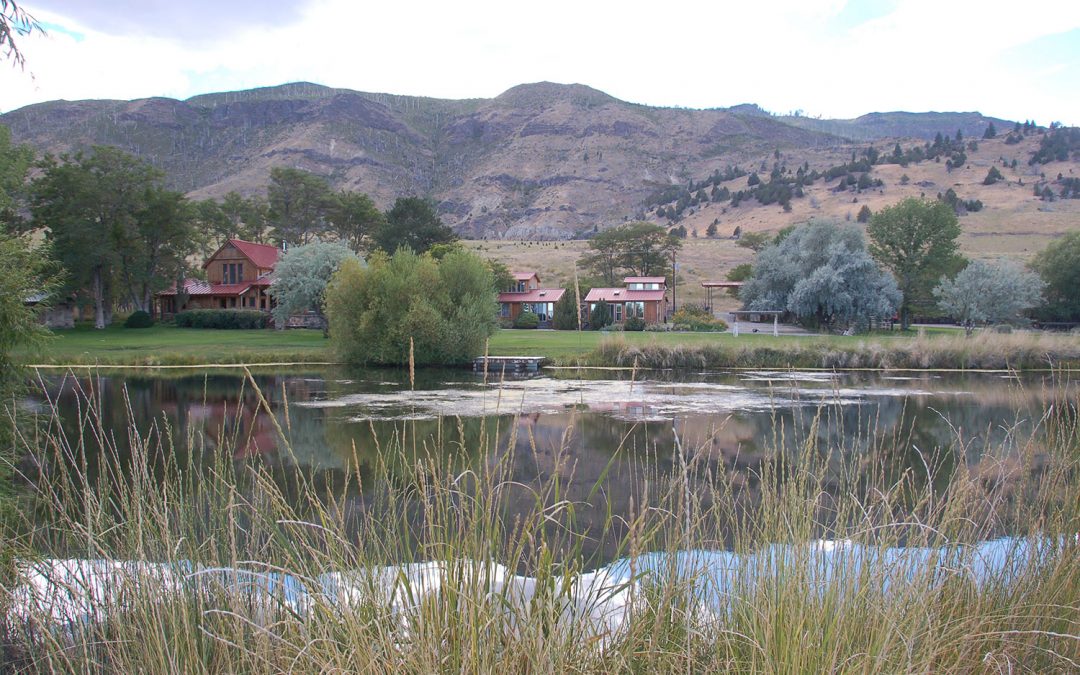
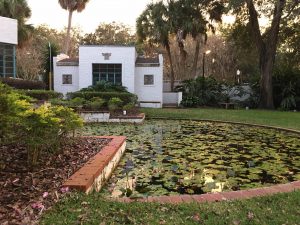
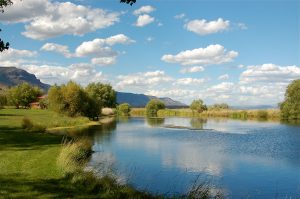
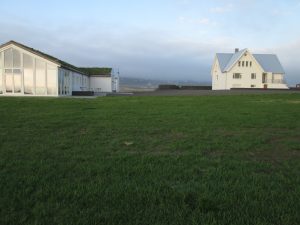
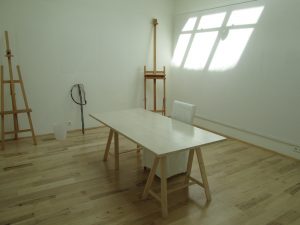
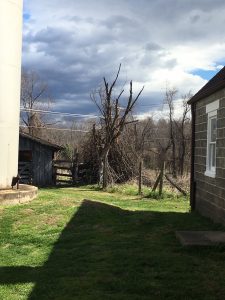
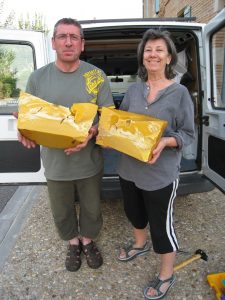
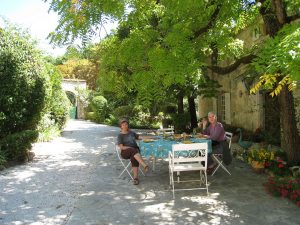
What about the Helene Wurlitzer in Taos and Herkeke in Lama,NMor any residencies associated with National PArks?
I’ll get to those, Paul. As implied in the headline and stated in the newsletter, this is the first in a series. And there are a lot of residencies out there!
Thank you for the info!
Thanks Ann Landi. Very interesting.
Thanks Ann, so great to get the word out on these opportunities for artists to explore creating in new environments.
Wonderful article Ann. I’ve been thinking about residencies a lot. So exciting.
Helps me expand my vision – thanks so much Ann. I love the idea of only needing 5 hours of sleep and being in in that special light in Iceland!
Great descriptions, and very helpful! Usually,you don’t really know what you will be in for until you get there.